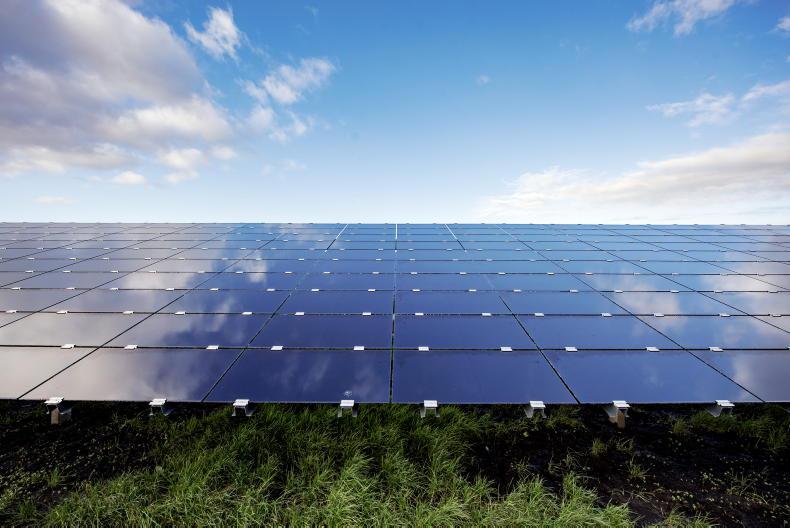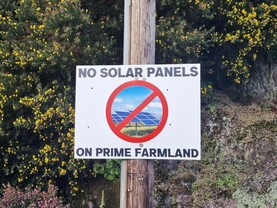Ireland’s energy-related emissions are now at their lowest level in over 30 years, falling a further 1.3% last year.
This is according to the Sustainable Energy Authority of Ireland (SEAI), which published the interim national energy balance for 2024, which showed that emissions have fallen 11% since carbon emissions targets were introduced in 2021.
In addition, this drop in emissions comes despite an increase in overall energy use, which grew by 2.3% last year. This is partially due to increased use of bioenergy and technologies such as solar PV and heat pumps.
SEAI director of research and policy insights Margie McCarthy said the energy changes Ireland is making are going in the right direction.
“Last year saw record levels of solar PV generation, record levels of heat pumps and further growth in overall renewable energy share. These were all driven by positive policy decisions,” she said.
“The data shows two clear messages; if we are to meet our targets, we have no time to wait, we need to accelerate our deployment of renewable energy technologies and we have to make wise decisions on energy demand growth.”
Renewables
The SEAI estimates that emissions from the electricity sector were down by 7.5% on 2023 figures.
Although renewable generation capacity increased from 2023, renewables supplied a slightly lower share of Ireland’s electricity than in 2023.
This is explained by the increase in electricity demand outpacing the increase in renewable generation, as well as grid constraints and lower wind outputs.

The SEAI estimates that emissions from the electricity sector were down by 7.5% on 2023 figures.
The top three sources of electricity in Ireland last year were natural gas (42.1%), wind (31.7%) and net imports from interconnectors (14%).
“We must continue to invest in renewable technologies and interconnectors, we must continue to retrofit our housing and public building stock and we must continue to move to more active and public transport options where possible.
“Only with collective effort and buy in will we achieve the changes needed in our consumption behaviours to realise the energy transition.”
Emissions
Transport emissions were down by just 1.2% year on year, despite significant advancements in biofuel blending and despite progress in the EV transition.
Meanwhile, heating emissions increased by 2.4%, likely because 2024 was cooler than 2023, though 2024 temperatures remained above average.
“The reality is that multiple global crises gave us a headstart in our energy reduction efforts, where COVID-reduced travel and energy price increases, plus warmer than average winters, have all played a role in reducing our national emissions to date. Yet, we still remain short of where we need to get to,” added McCarthy.
“A successful energy transition will benefit us all. It will mean improved air quality, more comfortable homes and an economy built on sustainable industries and jobs. It’s time to make the hard choice needed to deliver a better energy future.”
Read more
Solar farms reach new generation record - EirGrid
Rethinking small-scale on-farm biogas
Construction starts on Ørsted’s second Irish solar farm
Unforeseen delays plague key biomass and biogas policies
Ireland’s energy-related emissions are now at their lowest level in over 30 years, falling a further 1.3% last year.
This is according to the Sustainable Energy Authority of Ireland (SEAI), which published the interim national energy balance for 2024, which showed that emissions have fallen 11% since carbon emissions targets were introduced in 2021.
In addition, this drop in emissions comes despite an increase in overall energy use, which grew by 2.3% last year. This is partially due to increased use of bioenergy and technologies such as solar PV and heat pumps.
SEAI director of research and policy insights Margie McCarthy said the energy changes Ireland is making are going in the right direction.
“Last year saw record levels of solar PV generation, record levels of heat pumps and further growth in overall renewable energy share. These were all driven by positive policy decisions,” she said.
“The data shows two clear messages; if we are to meet our targets, we have no time to wait, we need to accelerate our deployment of renewable energy technologies and we have to make wise decisions on energy demand growth.”
Renewables
The SEAI estimates that emissions from the electricity sector were down by 7.5% on 2023 figures.
Although renewable generation capacity increased from 2023, renewables supplied a slightly lower share of Ireland’s electricity than in 2023.
This is explained by the increase in electricity demand outpacing the increase in renewable generation, as well as grid constraints and lower wind outputs.

The SEAI estimates that emissions from the electricity sector were down by 7.5% on 2023 figures.
The top three sources of electricity in Ireland last year were natural gas (42.1%), wind (31.7%) and net imports from interconnectors (14%).
“We must continue to invest in renewable technologies and interconnectors, we must continue to retrofit our housing and public building stock and we must continue to move to more active and public transport options where possible.
“Only with collective effort and buy in will we achieve the changes needed in our consumption behaviours to realise the energy transition.”
Emissions
Transport emissions were down by just 1.2% year on year, despite significant advancements in biofuel blending and despite progress in the EV transition.
Meanwhile, heating emissions increased by 2.4%, likely because 2024 was cooler than 2023, though 2024 temperatures remained above average.
“The reality is that multiple global crises gave us a headstart in our energy reduction efforts, where COVID-reduced travel and energy price increases, plus warmer than average winters, have all played a role in reducing our national emissions to date. Yet, we still remain short of where we need to get to,” added McCarthy.
“A successful energy transition will benefit us all. It will mean improved air quality, more comfortable homes and an economy built on sustainable industries and jobs. It’s time to make the hard choice needed to deliver a better energy future.”
Read more
Solar farms reach new generation record - EirGrid
Rethinking small-scale on-farm biogas
Construction starts on Ørsted’s second Irish solar farm
Unforeseen delays plague key biomass and biogas policies







 This is a subscriber-only article
This is a subscriber-only article










SHARING OPTIONS: